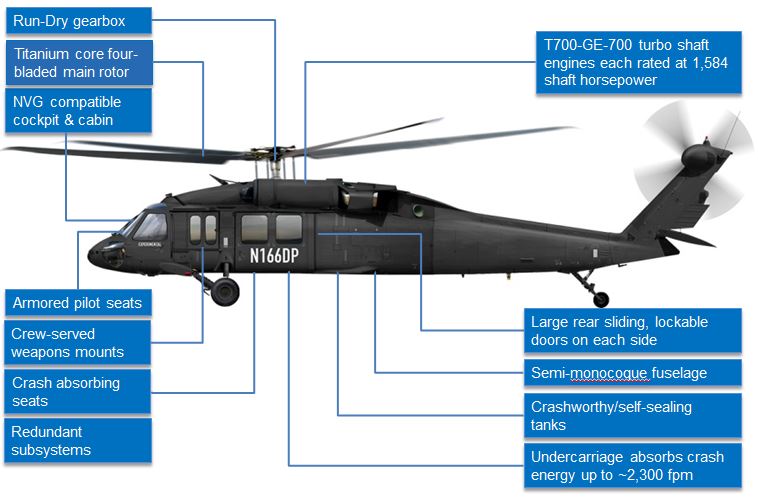Expert Insights: Enhancing Performance in UH 60 Helicopter Workflow
Navigating Uh 60 Helicopter Regulations and Compliance Needs

Regulatory Framework Summary
The regulatory framework controling UH-60 helicopter procedures includes a complex set of regulations and criteria established by aeronautics authorities. These guidelines are developed to ensure the secure and reliable procedure of UH-60 helicopters in different environments. The Federal Aeronautics Management (FAA) plays a central duty in developing and imposing these regulations, which cover a large range of operational elements, including airworthiness criteria, pilot certifications, maintenance demands, and operational treatments.
Compliance with these laws is necessary for helicopter operators to keep the highest degree of security and operational stability. Failing to comply with these regulations can lead to serious effects, including crashes, injuries, and regulatory assents. For that reason, helicopter drivers must remain informed regarding the most recent regulative growths and make sure that their procedures are in complete conformity with all appropriate regulations and standards.
Airworthiness Inspections and directives
In the middle of the governing structure controling UH-60 helicopter procedures, a critical focus rests on compliance with Airworthiness Directives and conducting extensive assessments to maintain security requirements and functional dependability. Airworthiness Regulations (ADs) are issued by aviation authorities to resolve dangerous problems in aircraft, consisting of the UH-60 helicopter, and required particular actions to be taken by proprietors or operators. Conformity with Advertisements is compulsory, and failure to abide by these instructions can result in serious effects, consisting of grounding of the aircraft.
Normal inspections are vital to ensuring the airworthiness of UH-60 helicopters. By sticking to a strict evaluation routine, operators can find and address prospective concerns quickly, consequently enhancing the security and integrity of UH-60 helicopter operations.
Pilot Certifications and Training

Pilot training for UH-60 helicopters is detailed and covers a broad array of topics, consisting of aircraft systems, emergency situation procedures, navigating, and mission-specific training. Additionally, pilots go through simulator training to practice different anonymous emergency situation situations in a regulated environment. This training assists pilots develop the required abilities to deal with tough situations successfully.


In addition, recurring training and expert advancement are vital for UH-60 pilots to stay current with the latest laws, modern technology, and finest practices. By buying pilot credentials and training, drivers can enhance safety, maximize performance, and ensure conformity with regulative requirements in the procedure of UH-60 helicopters.
Operational Limitations and Requirements
Pilot credentials and training act as the foundation for understanding the functional restrictions and requirements connected with UH-60 helicopter operations (uh 60). These operational limitations are implemented to guarantee the safety of the team, passengers, and the airplane itself. Operational constraints may consist of elements such as climate conditions, weight constraints, altitude restraints, and operational borders. It is important for pilots to be skilled in these restrictions to make informed choices during flight procedures. Additionally, conformity demands, such as sticking to particular trip paths, communication methods, and emergency treatments, are essential for preserving functional see this website safety and governing conformity. Pilots should remain existing with all operational restrictions and needs through routine training, instructions, and reviews to alleviate threats and ensure efficient and safe UH-60 helicopter operations. By focusing on adherence to these functional standards, pilots can enhance the overall security and performance of their goals while supporting regulative requirements.
Emergency Situation Treatments and Conformity Testing
Efficient emergency treatments and thorough conformity screening are important elements of preserving operational safety and security and governing adherence in UH-60 helicopter procedures. Emergency procedures incorporate procedures for various scenarios, consisting of engine failings, fires, hydraulic issues, and more. Pilots and staff participants should be well-versed in these treatments to react swiftly and properly in emergencies. Regular conformity testing ensures that the helicopter fulfills all regulative requirements established forth by air travel authorities. This testing includes extensive evaluations, checks, and analyses to verify that the aircraft is airworthy and in conformity with all appropriate laws.
Additionally, compliance testing may include simulations of emergency situation circumstances to assess the crew's reaction and the helicopter's performance under anxiety. By focusing on emergency situation treatments and conformity screening, UH-60 drivers can alleviate threats and demonstrate their commitment to security and regulative conformity.
Final Thought
Finally, adherence to governing framework, compliance with airworthiness regulations, pilot certifications and training, operational restrictions, and emergency procedures are important for navigating the regulations and requirements of running a UH-60 helicopter. uh 60. It is critical for drivers to focus on security and make sure full compliance with all applicable laws to keep the airworthiness and functional stability of the aircraft
Browsing the governing landscape bordering UH-60 helicopter operations demands a nuanced understanding of the detailed internet of policies and compliance needs.Conformity with these guidelines is important for helicopter operators to keep the greatest levels of safety and security and functional stability.Amidst the governing framework governing UH-60 helicopter procedures, an important focus exists on conformity with Airworthiness Directives Discover More and conducting thorough assessments to support safety requirements and operational integrity.Efficient emergency situation procedures and thorough conformity testing are essential elements of keeping operational safety and security and regulative adherence in UH-60 helicopter procedures. Routine conformity testing makes certain that the helicopter meets all governing requirements established forth by aviation authorities.